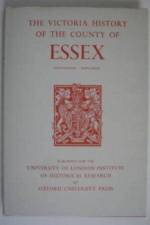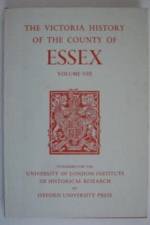- Volume VIII
av Beryl A. Board
1 179,-
This volume completes Chafford hundred and covers Harlow hundred. The part of Chafford hundred, now in Brentwood District and Thur-rock borough, includes Aveley, Stifford, Grays Thurrock and West Thurrock beside the Thames and, further north, Childerditch, Brentwood, and South Weald. Grays Thurrock, formerly a small port with a brickworks and a brewery, is now the main centre of the borough. The coastal marshes west of Grays were used mainly as sheep pastures until the 18th century, when large-scale chalk quarrying and lime burning began. The West Thurrock cement industry, which grew up in the 19th century, became one of the largest in Europe. It has since declined and the area isnow used mainly for the storage of oil and petroleum and the manufacture of soap, detergents, and marga-rine. Brentwood, now a large dormitory suburb of London, owed its early growth to its position on the main London-Colchester road, and per-haps also to the cult of St. Thomas the Martyr. The mansions of Belhus, at Aveley, and Weald Hall, South Weald, both dating from the 16th century, were demolished after the Second World War. South Weald park remains as a country park, and so does Thorndon park, including part of Childerditch, but some land in Belhus park was used after 1950 for a housing estate of the London county council. At Purfleet, in West Thurrock, a smaller housing estate occupies the site of powder magazines built by the government in the 1760s. Harlow hundred contained 11 parishes in west Essex, including the ancient market towns of Hatfield Broad Oak and Harlow. Hatfield, with its Benedictine priory, was one of the principal places in Essex in the Middle Ages, but it de-clined after the 16th century, and the hundred remained largely rural until after the Second World War, when five of its parishes became the new townof Harlow, built to rehouse 80,000 Londoners. Hatfield forest, belonging to the National Trust, comprises over 400 ha. There have been extensive maltings at Sheering and Harlow, breweries at Harlow and Hatfield Heath, and a silkmill at Little Hallingbury. Among great houses the 16th-century Hallingbury Place has disappeared, but Barrington Hall and Down Hall, both rebuilt in the mid 19th century, survive. At Netherhall, Roydon, are the remains of a 15th-century gatehouse.


